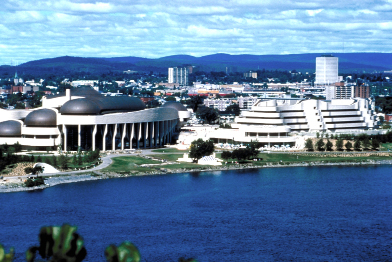Unit 2
1. Unit 2
Unit 2 Introduction

Jupiterimages/Photos.com/Thinkstock
The Canadian Museum of Civilization in Gatineau, Québec, lies across the Ottawa River from the Parliament buildings. The museum houses 20 000 years worth of Canada’s human history. The museum’s unique design was the creation of Canadian architect Douglas Cardinal. Cardinal, of Métis and Blackfoot heritage, incorporated a feeling for Canada’s land and peoples in the museum’s design.
Our buildings must be part of nature, must flow out of the land; the landscape must weave in and out of them so that, even in the harshness of winter, we are not deprived of our closeness with nature.
Like Cardinal, you will work towards a harmony of line and area in the Unit 2 Project. The lessons in Modules 3 and 4 will prepare you for this task.
In Module 3 you will explore length and distance. You will review and apply procedures for finding perimeter, circumference, and midpoints of two- and three-dimensional objects. You will also use your estimation and problem-solving skills in practical settings.
In Module 4 you will re-examine area. You will estimate and find the area of a variety of two- and three-dimensional objects, including parallelograms, trapezoids, circles, cones, and cylinders. Can you identify some of these shapes in the photograph of the museum?
In the Unit 2 Project you will change some parts of the habitat or product you designed in Unit 1. You will use the measurement skills you develop in Unit 2 to make these changes to your original design. You will learn more about the Unit 2 Project later.
For now, watch “Ready to Start Unit 2.”